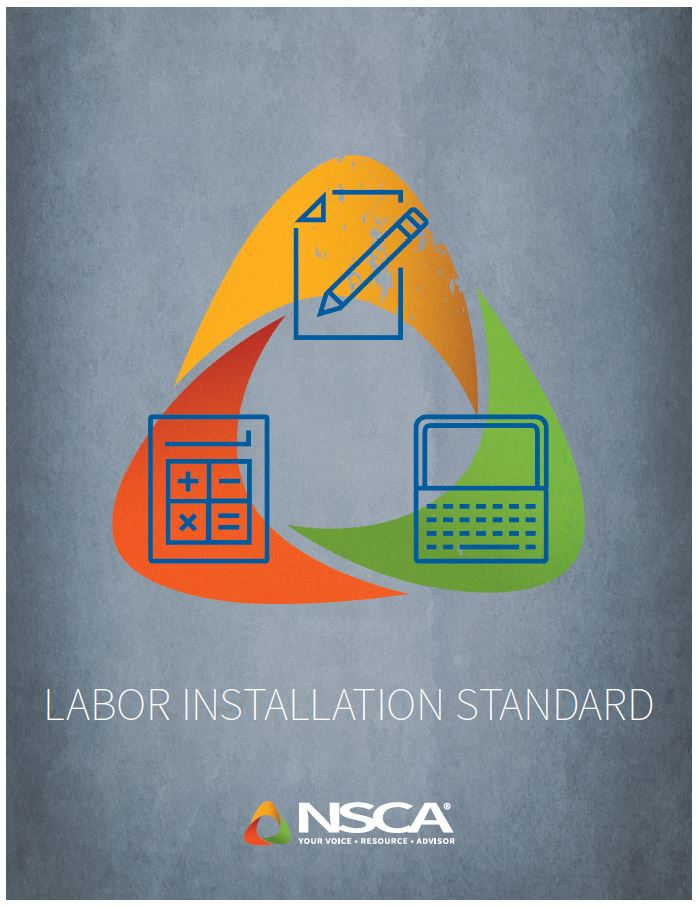
Coming from a 20-year history in broadcasting, Pat Vaughn felt a little behind the curve when he first joined integrator Simpatico in 2014 and needed to better understand loaded labor costs in his new role.
“I started to quickly realize that labor is the single biggest factor impacting profit and loss for a project,” says Vaughn, who now serves as Simpatico’s vice president of service delivery. Like many integrators, there were several factors he wasn’t taking into account when considering labor rates.
Because Simpatico is an NSCA member, Vaughn had a username and password that gave him access to industry resources at www.nsca.org.
While conducting a search online, he found the Labor Installation Standard guidelines. “This document quickly became the most valuable tool I had to ramp up my level of expertise and experience with commercial installations,” he explains. The guidelines have helped Vaughn understand how much labor and effort it truly takes to complete different tasks, as well as the impact of labor on the success of large projects.
“There are many different software options out there for estimating, and you can build fairly accurate quotes,” says Vaughn, “but you can’t define the working environment or what your employees are walking into: existing construction vs. a new build, for example.”
Learn More about the 40-Plus Ways NSCA Helps Integrators
Using the Labor Installation Standard Guidelines
When he uncovered the Labor Installation Standard guidelines, Vaughn was in a sales operations management role; all Simpatico projects ran past his desk. He spent lots of time doing labor calculations, using the guidelines as a reference. During a conversation with a fellow colleague, however, he realized he could make the data even more valuable by inputting it into a company spreadsheet that would make calculations for him.
Now that the Labor Installation Standard data is input into a spreadsheet, nearly all pre-bid work is completed through a pivot table. “Now I can say, ‘We’re installing this device, and we have this many of them. What is my calculation? What’s my labor load here?’ ”
When Labor Installation Standard data is updated, Vaughn ensures that the company’s pivot tables are updated as well.
Sharing Labor Information with Sales
NSCA’s Labor Installation Standard guidelines have also helped Simpatico deal with the challenge of accounting for different work paces in the field.
Due to experience and comfort levels, not all technicians work at the same speed. For example, a tech that moves quickly on AV projects may work slower when installing an intrusion detection system.
To account for these variances, Simpatico’s sales professionals were approaching trusted colleagues to ask how long a certain task might take based on the employees involved – or just making educated guesses when trying to determine a starting point for negotiating with a customer.
To combat this challenge, Vaughn trained the Simpatico sales team on how to use the Labor Installation Standard. It breaks out the data into three levels – normal, difficult, and challenging – to help account for different experience levels. “Sometimes deals get to the razor’s edge. Instead of just guessing about everything, we now have a tool to start from,” says Vaughn.
Even when integrators grow to the point where the company is able to invest in strong, accurate estimating software solution, he says the Labor Installation Standard guidelines are a good way to double check yourself. “We use the Labor Installation Standard guidelines on every project. You don’t want to leave anything on the table, but you also don’t want to sell yourself short. This tool helps you find the middle ground.”






